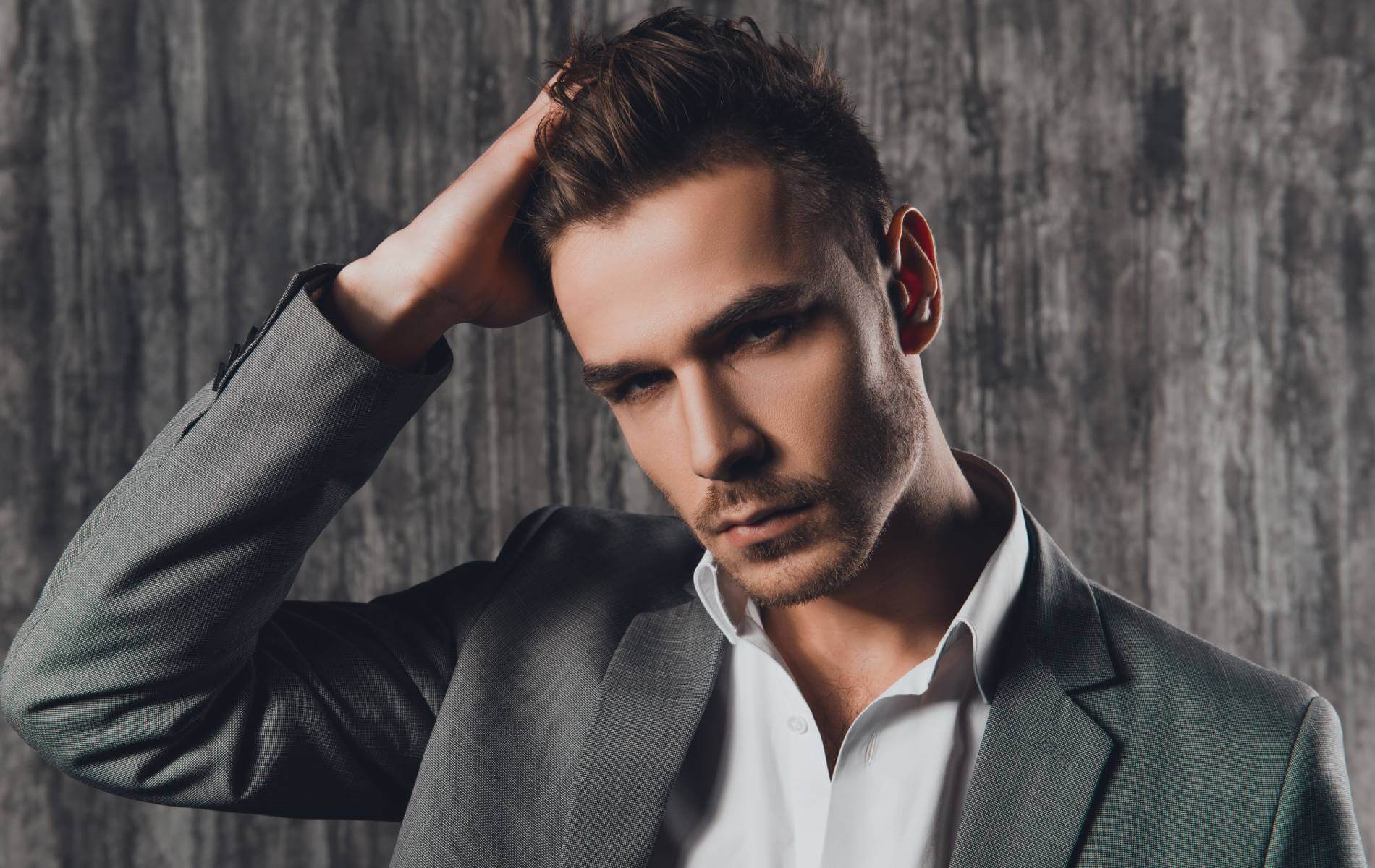What is Male Pattern Hair Loss?
Androgenic Alopecia, also known as male pattern hair loss, is a condition that affects all men at some point as the get older. Most white men develop some degree of baldness, according to their age and genetic makeup. Male pattern baldness affects up to half of all white men by the age of 50 years and up to 80 percent of men in the same group by the age of 70 years. Other ethnic groups such as those of east Asian descent are less affected.
Hair loss in men begins manifesting with the miniaturization of the hair follicle and is generally known to be related to hormones in both males and females.
It is important to understand that each hair on your head lives in small hole called a follicle. Most of the time, the size of the follicle remains the same, and normal hair continues to grow from it. However, in cases of male pattern hair loss, the follicle shrinks. The end result of this shrinkage of the follicle is either shorter finer hair, or no hair growth at all.
At some point, even though the hair follicle itself will remain alive and open in spite of its smaller size, hair simply stops growing.

What Are the Signs and Symptoms of Male Hair Loss?
Gradual thinning on top of head
This is the most common type of hair loss, affecting both men and women as they age. In men, hair often begins to recede from the forehead in a line that resembles the letter M. Women typically retain the hairline on the forehead but have a broadening of the part in their hair.
Circular or patchy bald spots
Some people experience smooth, coin-sized bald spots. This type of hair loss usually affects just the scalp, but it sometimes also occurs in beards or eyebrows. In some cases, your skin may become itchy or painful before the hair falls out.
Sudden loosening of hair
A physical or emotional shock can cause hair to loosen. Handfuls of hair may come out when combing or washing your hair or even after gentle tugging. This type of hair loss usually causes overall hair thinning and not bald patches.
Full-body hair loss
Some conditions and medical treatments, such as chemotherapy for cancer, can result in the loss of hair all over your body. The hair usually grows back.
Patches of scaling that spread over the scalp
This is a sign of ringworm. It may be accompanied by broken hair, redness, swelling and, at times, oozing.

What Are the Causes of Male Pattern Hair Loss?
Men normally lose their hair when three main factors interact: genetics, age, and hormones. The androgenetic alopecia, male-pattern baldness happens as hormone levels change over the course of a man’s life.
These factors contribute to the gradual shrinkage of the tiny cavities in the skin at the base of hairs, known as scalp hair follicles. Hair grows progressively shorter and finer until no new hairs grow.
Hormonal Changes
As noted, male pattern hair loss is mainly due to hormonal changes. In particular, a hormone called dihydrotestosterone (DHT) can become imbalanced. Too much DHT in the scalp can lead to a shortened anagen phase, which will lead to reduced production of hairs. The hairs that do continue to grow will be much finer.
Heredity
The chances of developing male pattern hair loss are significantly increased if someone else in your family has experienced the condition.

Fortunately, there has been a revolution in androgenic hair loss treatments in recent decades. At Eternal Hair and Esthetics, we offer a range of services which can minimize hair loss, promote renewed growth, or even create new hair follicle sites.
Here are just some of the non-surgical treatments we offer our male clients:
- Micropigmentation: For buzz cuts and crew cuts, micropigmentation can give you the appearance of a full coverage of hair follicles. It works by using micro-needles which deposit long-lasting dots of pigment onto your scalp to mimic hair coverage on bald patches. The process is non-surgical and all but painless.
- PRP: Protein-rich platelets extracted from drawn quantities of blood can be injected into sites for hair restoration, triggering new growth. This two-step method can both strengthen and thicken existing hair, and slow hair loss.
- Mesotherapy: Painless and non-invasive, mesotherapy is a series of injections containing enzymes, hormones, and vitamins to renew your hair’s volume and luster. This cocktail of nutrients stimulates circulation and has an anti-inflammatory effect, improving scalp health.
- Red Light Therapy: Red light therapy or near Infrared therapy uses LED lights at specific wavelengths to stimulate hair growth by increasing blood flow in the scalp and boosting metabolism. This treatment is also known as low-light therapy, PBM or soft laser treatment.
- Minoxidil: Commercially called Rogaine, minoxidil is a treatment applied to the scalp which extends the early growth phase of new follicles (anagen phase). It is a well-known and FDA-approved treatment for both male pattern baldness and all over thinning.
- Exosome Therapy: A brand-new genetic treatment revolutionizing hair renewal. Exomes are messaging components of cells which reawaken hair-producing stem cells. Dormant scalp follicles can begin to grow new hair. Thinning hair becomes fuller.
- KeraLase: This treatment combines use of a micro-laser to create new channels for hair follicles and a serum to promote new growth.
Talk to an Eternal Hair and Esthetics expert today about which option may be right for you. We also offer hair transplant treatments too.

